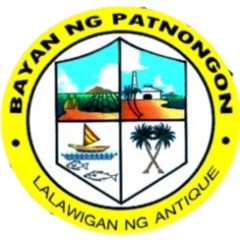Historical Background Patnongon grew out of the various settlements which emerged and fused into one, long before the arrival of the Spaniards. Its early settlers were the Maghats and the first settlement was in Catuayan. These settlers were a little bit cultured than the Aetas. They found Catuayan an ideal place to settle because food and building materials were readily available. The sea, rivers and plains were good sources of food. The swamps provided roofing materials. Aslom, which was a few yards away, was a good source of drinking water. Myth had it that vast treasures were buried in this place but were guarded by evil spirits. Catuayan was strategically located so Spaniards usually docked at this place. The crew of the Spanish boat, which anchored in Catuayan however, were all killed by the Maghats. Moro predatory raids caused some settlers to move inland. Settlements were established as far east in places at the foot of the Magpungay Mountain. Other later settlement were found in Catmon, Carit-an, Badiangan, Baye and Panacawon, a sitio of Tamayoc. Among the early settlements, Catmon beacame the center of religion. The native then, had their supreme god, “Bulalacao” and Bangot-banwa as their high priest. They had their own government and court. Though their laws were harsh and cruel, justice was meted out justly and impartially. After the Spaniards had gained firmer and greater foothold in this place, visitas was to form a government with a set of rules and regulations. Domingo Diano was appointed as the first lieutenant, whose powers powers were the same and absolute as those of the “Capitanes” and the “Gobernadorcillos”. Formerly, the town of Belison was part of Patnongon, However during the term of Mayor Juan Estañol on March 10, 1961 through Executive Order No. 421 Belison and the outlaying barrios became a separate entity. It should be noted that the sitio of Belison was founded in 1810 during the term of Gobernadorcillo Francisco Roque. In 1921, during the term of Gobernadorcillo Fernando Cabiling, the sitio of Carit-an was established. In 1762, the first gobernadorcillo was appointed. This made Patnongon a separate entity from that of Bugasong. The first gobernadorcillo was Don Pedro Tucoy. On January 15, 1873, the first Spanish priest, Padre Ignacio Clemente Panganiban, came to Patnongon. Six years later, during the term of Maximo Elio in 1879, the stone church was finished. It was also in this year when the municipal building was constructed. This was finished in 1895. During the Japanese occupation, this was razed and destroyed by fire. A new municipal building was constructed to replace and destroyed one. The construction of he stone bridge spanning Patnongon River was one of the accomplishments in t he administration of Ramon Manzanilla in 1887. On August 30, 1896, the first mass was said by Padre Eustaquio Heria in the newly finished stone church. Two years later, on November 25, 1898, the first election was held in all freed areas after the end of the Philippine revolution and Enrique Salvani was elected the first President of Patnongon. Legend of Patnongon Patnongon was named after “ongon” or thorn which the Spanish priest from Bugasong unluckily stepped on when he went on foot along the banks of Catmon River (now Patnongon river) on his visit to Catmon which was then the religious center of the early settlements. Catmon River came to be known by his name beacause of the big tree that grew at its source. Legend says that one early morning, numerous Moro vintas were seen approaching from the horizons. Moro pirates came to plunde rthe villages and sacked the same for food, gold and treasures. The villagers saw an old man, bearded and flowing robe and a wand on his hand, walking on the beach. The presence of this old man chilled the hearts of the Moros for they were scared to dock. They moved back, instead. The inhabitants came to believe this old man was St. Augustine, that time the patron saint of Sibalom. Because of this miraculous deed, St. Augustine became the patron saint of Patnongon while Sta. Rita de Cacia, that of Sibalom.




